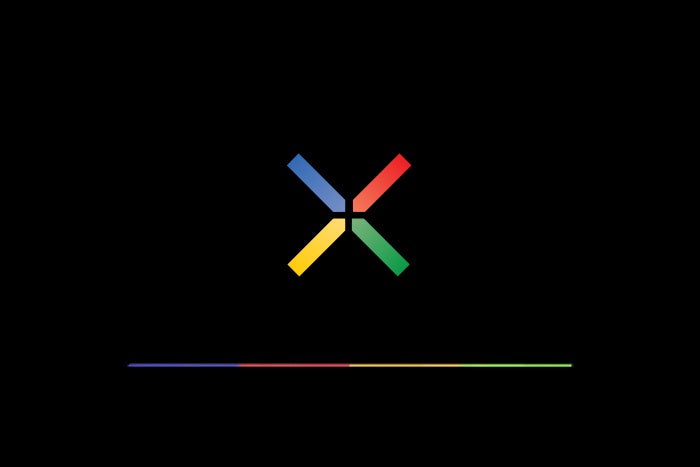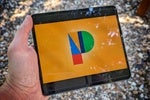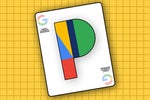Dearly beloved, we gather here today to mourn the loss of two pioneers in the Google hardware universe — two names near and dear to many of our hearts, and names whose final spark has now flickered and faded.
This virtual funeral honors the memory of both the Nexus and Chromebook Pixel lines of devices — the inaugural Google-branded flagship products for Android and Chrome OS, respectively. The two have now joined their cousins Google Reader, Google Lively, and Google More Messaging Services Than Any Semi-Sane Person Can Possibly Count in the severely overcrowded Google graveyard.
Nexus and Chromebook Pixel had much in common. Each line of devices marked Google's first steps into creating its own self-branded hardware for its respective ecosystem. Each started out targeting primarily enthusiasts — "geeks," as they're lovingly known in their communities — and then expanded into something far more significant. And each effectively passed into the great beyond this summer, as the associated devices reached their official "end of life" moments and were unable to receive any further sustenance in the form of operating system updates.
For Nexus, the recent release of Android 9 Pie in August acted at the moment of reckoning. That release was the first in ages to reach no Nexus family members — not even the youngest Nexus 5X and 6P siblings, born three years ago in 2015. The Nexus family is survived by its Pixel family descendents, including the Pixel, Pixel XL, Pixel 2, Pixel 2 XL, and Pixel 3 Mega-Leak Edition.
For Chromebook Pixel, it was but weeks ago that the original Pixel product received its final operating system update. That Pixel is survived by one sibling, the second-gen Chromebook Pixel (a model that was sold for approximately seven minutes in 2015 and which was basically just an iterative update to the original) as well as the Pixelbook family that descended from it.
Let's all take a moment to look back and reflect upon the lives of these fine fallen comrades and the impact they leave behind.
In memoriam
The Nexus line was born in 2010 with the arrival of the Nexus One — the offspring of progressive parents and occasional lovers Google and HTC. The phone launched with the now-hilarious-seeming tagline "Web meets phone." It was touted as being both "wide" and "thin" (a combination of characteristics one should use cautiously when describing fellow humans) and featured a distinctive trackball in addition to the then-standard four Android navigational buttons.
Most notably, however, the Nexus One was the beginning of Google exerting an ounce of control over Android — turning to its own self-sold device to showcase tight integration with its various services and a user experience that represented its view of how the operating system should work.
The Nexus One met its first sibling, the Samsung-made Nexus S, that same year. (Google was rather frisky and promiscuous in those early years. Hey, we've all been there.) The Nexus S helped introduce the oh-so-green Android 2.3 Gingerbread software along with a more "modern" phone design modeled off of Samsung's first-ever (and oh-so-plasticky) Galaxy S model — complete with a curved 4-in. display and two (two!) cameras.
Then came the Galaxy Nexus — another Samsung-Google child, born in late 2011. The Galaxy Nexus served as a vehicle for Google's next-generation Android 4.0 Ice Cream Sandwich operating system, which was truly the start of Android's transformation into contemporary software design. It also marked the start of Google's love-hate relationship with Verizon as an "exclusive" carrier partner for its products — a relationship that continues to raise eyebrows in certain ways today.
The Galaxy Nexus rocked a "jumbo-sized" 4.65-in. screen (for comparison, a "compact" phone today typically has a 5-in. display) and was the first flagship to forego physical navigation keys in favor of Ice Cream Sandwich's on-screen button model. It also had a handful of highlighted features that, uh, didn't exactly stand the test of time:
The Nexus family expansion continued with the LG-made Nexus 4 and Nexus 5, in 2012 and 2013, and then the quirky Motorola-made Nexus 6 in 2014 — leading up to those aforementioned final 2015 Nexus 5X and 6P models (made by LG and Huawei, respectively).
And in between, the Nexus family expanded with two Asus-made Nexus 7 tablets in 2012 and 2013, a Samsung-made Nexus 10 tablet in 2012, and an awkward HTC-made Nexus 9 tablet in 2014 — the last (token) effort Google put into Android tablets before slowly backing away from the form and turning its attention to Chromebooks instead.
Oh, and we can't forget the announced-with-much-fanfare-but-never-released Nexus Q, in 2012, and the Nexus Player that followed it (and was released, mostly) in 2014.
As for the Chromebook Pixel, its significance for Chrome OS and Google in general can't be overstated. The first Google-made Chromebook showed the world that Chrome OS didn't have to exist only on low-quality, budget-level laptops. It brought elegance and luxury into the realm of cloud-centric computing and kickstarted a new era of serious hardware development for the platform. It also introduced the idea of touchscreens for Chromebooks — a notion that seemed silly to many at the time but that'd prove to be prophetic for the way Chrome OS and mobile computing in general would evolve.
Beyond that, it was the first device to be designed and created solely by Google, in the role of manufacturer — no "working closely" with partners like Samsung and LG to customize existing hardware, and no brands associated with the product other than Google itself (and Pixel, no less). That set the stage for so much of what we're seeing play out with Google's self-contained ecosystem strategy today.
Goodnight, sweet princes
Nexus and Chromebook Pixel, you may have served your earthly purposes — showing how Google's software vision can shine in its various forms and paving the way for the Pixel and Pixelbook products that'd succeed you — but rest assured: Your memories will live on. (Except for maybe the Nexus Q. I had actually already forgotten about that again, just in the time since we talked about it a minute ago.)
In lieu of flowers, the Nexus and Chromebook Pixel families request all mourners donate personal data to Google in their names.
Sign up for JR's weekly newsletter to get more practical tips, personal recommendations, and plain-English perspective on the news that matters.

[Android Intelligence videos at Computerworld]




















































































